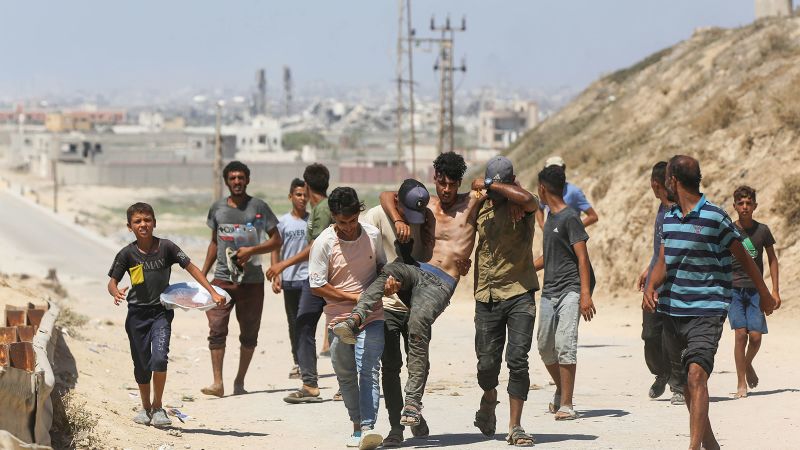
Israeli Military Operations in Gaza City: Thousands Forced to Flee Amid Escalating Conflict
In recent days, the Israeli military has launched new operations in Gaza City, resulting in thousands of Palestinians being forced to evacuate their homes due to heavy bombardment and evacuation orders.
According to reports from various sources, including the IDF Arabic Spokesperson Avichay Adraee and Hamas' political bureau chief Ismail Haniyeh, the Israeli military has been issuing evacuation orders for large neighborhoods in Gaza City. These orders have caused panic among residents and raised concerns over potential massacres and expulsions.
One resident, Zahia Odeh, considered returning to her home despite the fear and terror that comes with staying in the conflict zone. Another resident, Reem, fled with her family but was caught in heavy bombardment and had to climb walls for cover.
The Israeli military claims that intelligence indicates the presence of Hamas terrorist infrastructure and operatives in these areas. However, Hamas has accused Israel of trying to make Gaza City an uninhabitable area by evacuating residents and publishing misleading evacuation maps.
As a result of these operations, approximately nine out of ten people in Gaza are now estimated to be internally displaced, with the total number of displaced people in Gaza increasing from 1.7 million in May to an estimated 1.9 million now.
Many evacuated residents have sought refuge in overcrowded hospitals and other facilities, such as the Nasser Medical Complex, which reached full capacity. Only 15 of Gaza's 36 hospitals remain functional, albeit partially.
The ongoing conflict has also disrupted cease-fire talks between Israel and Hamas. Egyptian mediators have been working to bring both sides to the negotiating table in an effort to reach a resolution and bring some respite to the people of Gaza.

